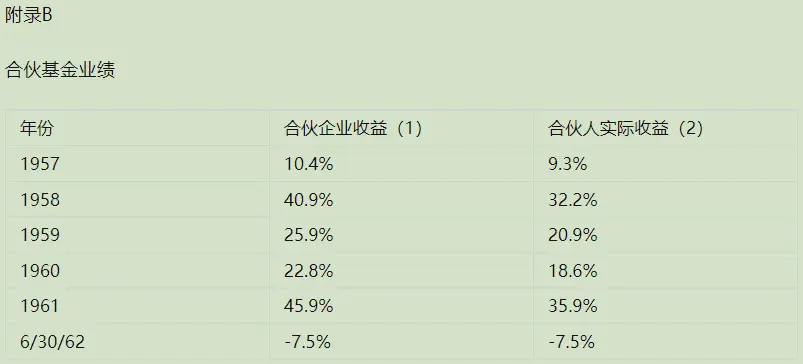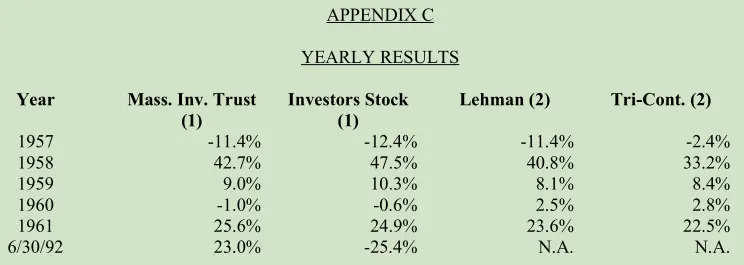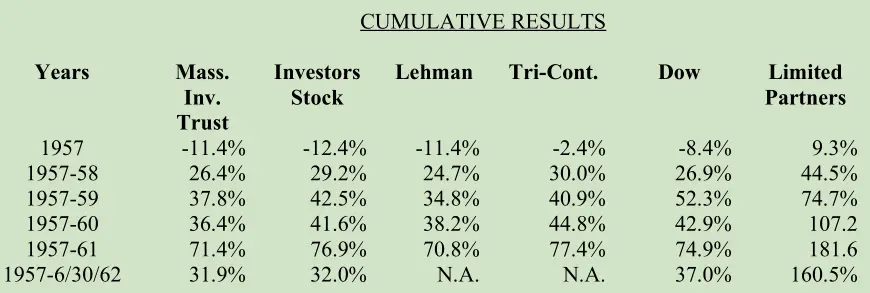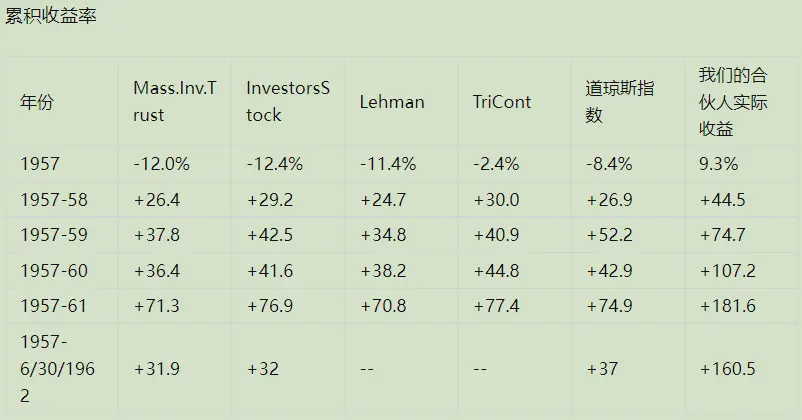Asset Values:
The above calculations of results are before allocation to the General Partner and monthly payments to partners. Of course, whenever the overall results for the year are not plus 6% on a market value basis (with deficiencies carried forward) there is no allocation to the General Partner. Therefore, non-withdrawing partners have had a decrease in their market value equity during the first six months of 7.5% and partners who have withdrawn at the rate of 6% per annum have had a decrease in their market value equity during the first half of 10.5%. Should our results for the year be less than plus 6% (and unless there should be a material advance in the Dow, this is very probable) partners receiving monthly payments will have a decrease in their market value equity at December 31, 1962. This means that monthly payments at 6% on this new market equity next year will be on a proportionately reduced basis. For example, if our results were an overall minus 7% for the year, a partner receiving monthly payments who had a market value interest of $100,000 on January 1, 1962 would have an equity at December 31, 1962 of $87,000. This reduction would arise from the minus 7% result, or $7, 000 plus monthly payments of $500 for an additional $6,000. Thus, with $87,000 of market equity on January 1, 1963, monthly payments next year would be $435.00.
资产价值:
上述业绩计算未扣除总合伙人的分成和每月向合伙人支付的利息。若按市值计算的合伙基金整体收益率未达到6%以上(亏损将在下一年度抵减),普通合伙人没有分成。因此,在本年度前六个月,没有提现的合伙人市值权益减少7.5%,按照年利率6%提现的合伙人市值权益减少10.5%。如果本年业绩低于6%(除非道指大涨,否则很可能),1962年12月31日,获得每月利息的合伙人的市值权益会减少。按照新市值权益,明年以6%的利率每月支付的利息同样会相应减少。假如我们今年整体亏损7%,一位获得每月利息的合伙人1962年1月1日拥有市值权益100,000美元,1962年12月31日,他的权益则是87,000美元。权益下降是因为亏损7%减少7,000美元,再扣除每月500美元,全年6,000美元的利息。1963年1月1日,新的市场权益为87,000美元,明年每月的利息就是435美元。









